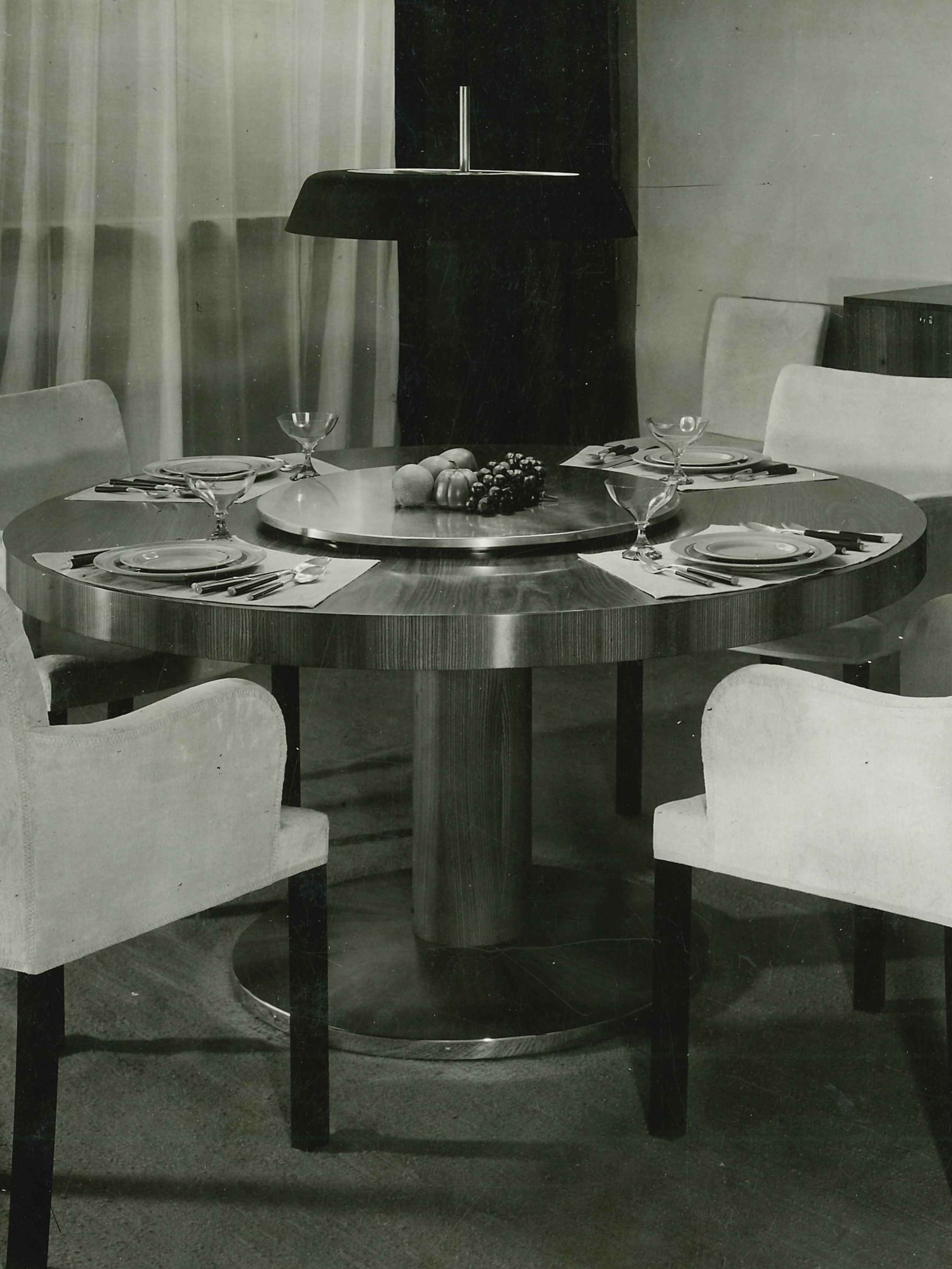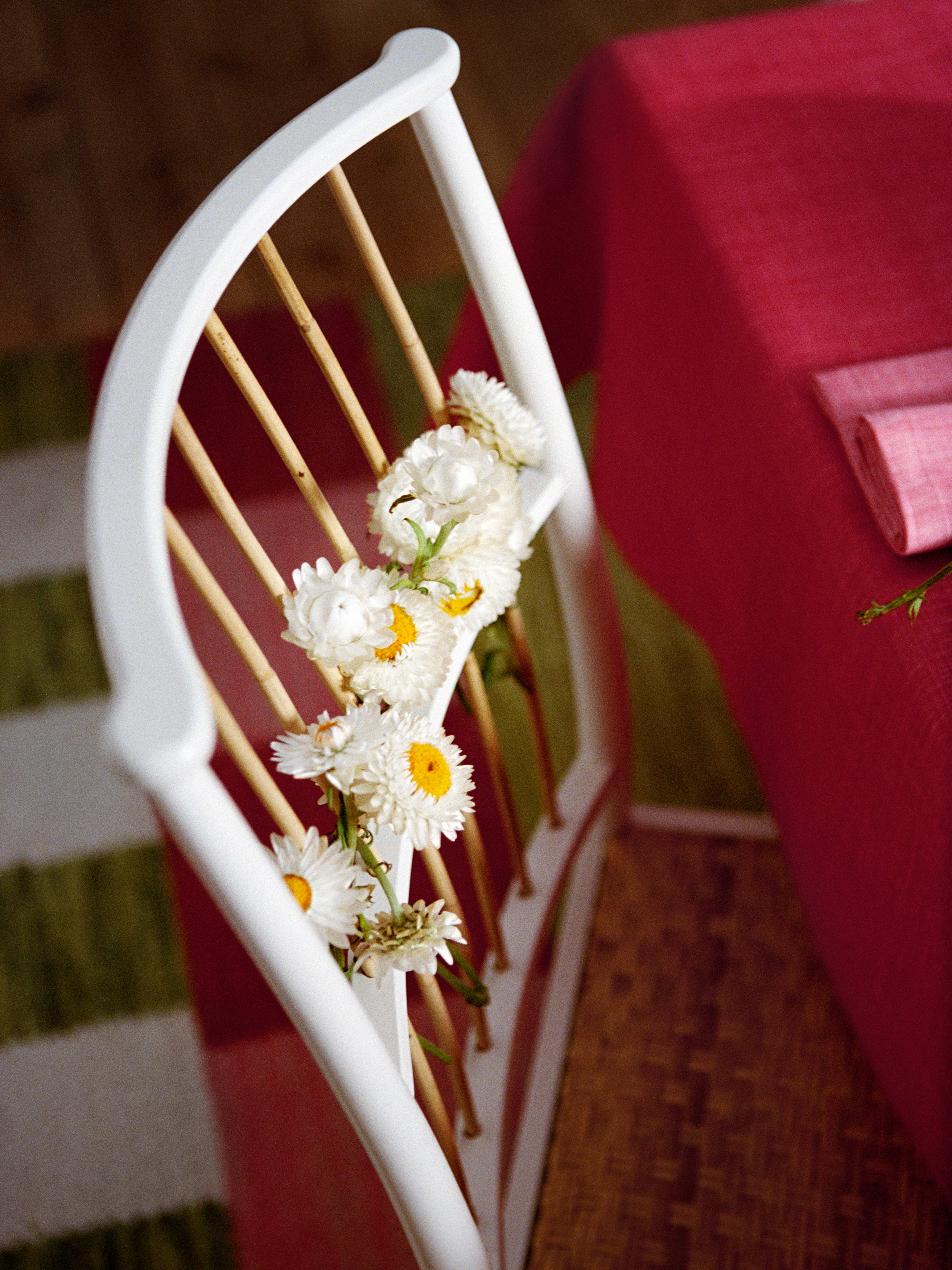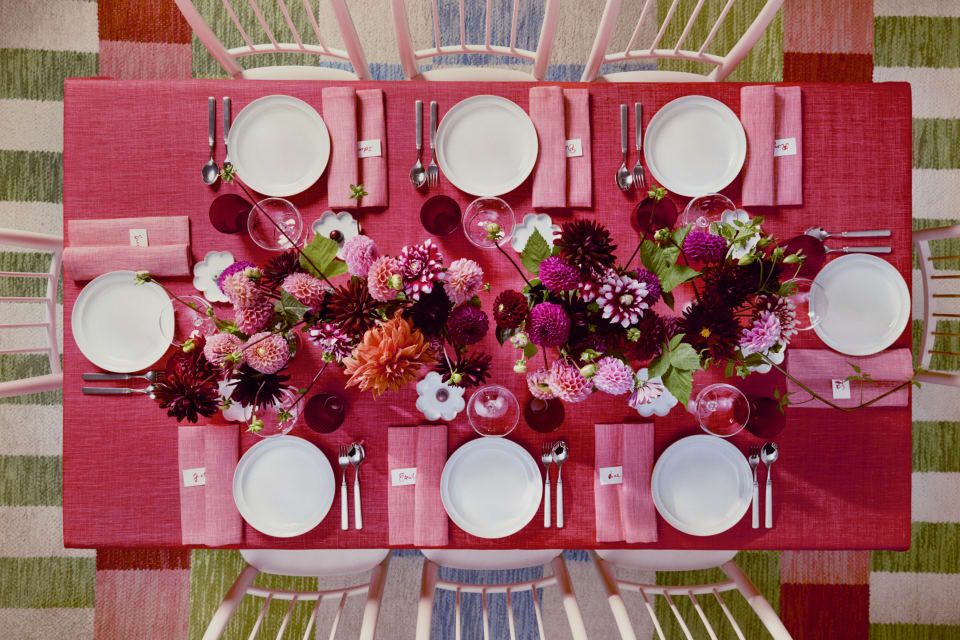
Plate Fern
The table setting. A way to welcome beauty into daily life and make the most of every meal.
Svenskt Tenn’s founder Estrid Ericson, who was known for her beautiful table settings, had a philosophy that the meal itself could be as simple as you like, but there should always be something personal about it. That the grey everyday life needs colour, and we should not be afraid to use fine glassware, textiles and beautiful porcelain even in daily life.
In a radio talk on 20 March 1945, Estrid Ericson shares her thoughts on table settings. She describes five table settings in detail, so that the listener is able to picture them: “Since television is not yet ready, I cannot show any pictures of table settings, but I will try to describe some...”
In these three table settings for breakfast, lunch and dinner, we have focused on Estrid Ericson’s table setting art with beauty throughout every detail. The table settings are described here through film, photos and text, so that you can really feel the atmosphere around the table.
Estrid Ericson“The meal can be as simple as you like, but there must be something personal about it. Routine, the commonplace and a lack of originality are as bad as poor taste. Daily life should not be stereotypical. We should not use our beautiful things only when we have guests. Grey everyday life needs colour!”

For breakfast, we gather around Jan Ruhtenberg’s Dining Table 251. With its removable tray and round shape, it invites us to share a meal together around the set table.
The clean wooden surface contrasts with the stainless steel tray. There is a bunch of yellow marigolds in a vase and the simple elements of breakfast add to the beauty. The cheese is served on a brown ceramic plate, the toast on a woven rattan tray, and the grapefruit in simple white porcelain bowls. Warm tea in a pewter pot and green, simply folded linen napkins contribute to the cosy atmosphere.

Dining table 251 at display in 1932.
Estrid Ericson“The pleasures of the table are the first and last pleasures of all ages and all classes of society. We sit at the table more than a thousand times every year of our lives, and our meal is so important for happiness in life, that we should make an effort to turn it into a pleasant occasion. We should make the most of everything that can give it poetry and pleasure.”

Beauty in the details at the kitchen table.
A red, patterned cotton cloth decorates the table. The butter is served in a frosted brown ceramic bowl and the freshly baked bread on a large wooden platter. Piping hot pumpkin soup in hand-thrown porcelain dishes decorated with blue flowers, and rowanberry sprigs in a vase. Cutlery and napkins laid simply on plates. The lunch is simple, but the table setting is something special.
A colourful display on the lunch table.
Estrid Ericson“Emphasise the changing seasons. Let them determine the look of the everyday table. Don’t use the same things in winter and summer.”
Our lunch table setting features handicrafts from different parts of the world. The tablecloth and cotton napkins are block printed at a small, family-owned company in Jaipur, India. The plates and bowl with lid are handmade by ceramicist Calle Forsberg in his Saltsjö-Boo workshop, the wooden platter used for the bread is handcrafted in Morocco, while the porcelain tableware with blue flowers has been hand-thrown and painted in Romania.
The inspiration for this lunch table setting comes from the archive, in a photo of a table setting by Estrid Ericson from the 1960s. Here too, just a few yet decorative details were used to make the table setting warm and inviting, such as the block-printed tablecloth, the blue glass dishes, and the flower arrangements at the centre of the table.
Large bunches of colourful dahlias stand at the centre of the table. The colours are particularly festive against the freshly ironed cerise linen tablecloth and the beautifully folded pink napkins. The dishes are simple but made of the finest porcelain. The coloured glasses are further accents on the table setting, as is the timeless pewter cutlery placed to the right of each place setting.
Estrid Ericson“Real flowers have always been the most beautiful table decoration. Chalices and vessels were decorated with flowers, guests were wreathed, flowers were strewn over the tablecloth, meals were eaten under the open sky and in gardens, in arbours with all the wonders of nature to behold.”

Birthday table setting by Estrid Ericson, 1958.

A place of honour for the guest of honour.

An abundance of dahlias on the set table.
Estrid Ericson“Coloured glasses make excellent accent details on a table setting. A red fortified wine glass, a blue water glass, a green rummer glass. The Rhenish (Rhine) wine glass is traditionally pale green. But even that is not favoured by connoisseurs. They want the glass to be completely colourless, so as not to destroy Rhenish wine’s golden hue.”

Idra glass by NasonMoretti, Murano.